1972 BMW Bavaria: S-Class Challenger
In September 1968, BMW unveiled its first luxury class car in a long time, a direct competitor to the then-new Mercedes-Benz 250S and 250SE. It would eventually become the 7 Series that we all know today, but it was initially known as the 2500 and the 2800, and it ushered in a new era of six-cylinder-powered BMWs.
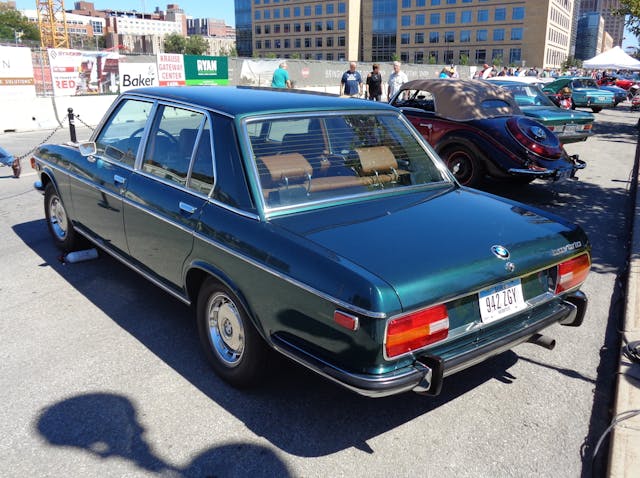
Of course, it wasn’t the first six-cylinder BMW, nor the first luxury BMW. Not by a long shot. But it was the first one in quite some time. BMW had a rough time of it for a while, subsisting on mini cars like the Isetta and 700 to keep the lights on, but then the “New Class” BMW 1800 and 2000 started to turn the tide and began what became the “Ultimate Driving Machine” era by the 1980s and ’90s.

The new car clearly had a similar look to the 2000 and smaller 1800/2002 models, but it was all new, stem to stern. Styling was a bit more “mature” in keeping with the car’s higher-end intended clientele. It is also my favorite era of BMW sedan. Weight was below 2900 pounds, it was 185 inches long with a 106-inch wheelbase. Of course, the biggest difference between the 2500 and the 2800 was the slightly larger displacement, but the 2800 also had a few extra niceties over the 2500, including Nivomat self-leveling rear shocks.

In its home market, the 1969 2500 had an MSRP of 14,485 marks (or $3680, which adjusted for inflation is about $31,318 today). The 2800 was 17,250 marks ($4400 / $37,446). Despite the imposing ask, over 36,000 were sold in its inaugural model year. The 2500 had 150 horsepower at 6000 rpm and 156 lb-ft of torque, while the 2800 had 170 horses with 174 lb-ft of torque. When the 2500 landed in the United States, it had a base price of $5284 (nearly $45K today).
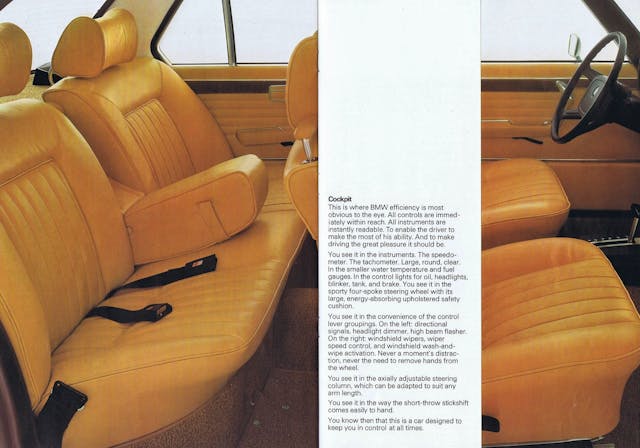
The initial 2.5-liter six was designed for displacement increases, and so BMW followed suit in April 1971 with the introduction of the 3.0. Two versions were offered, the 3.0S with twin carburetors and 180 horsepower, and the 3.0Si with Bosch D-Jetronic fuel injection and 200 horses.
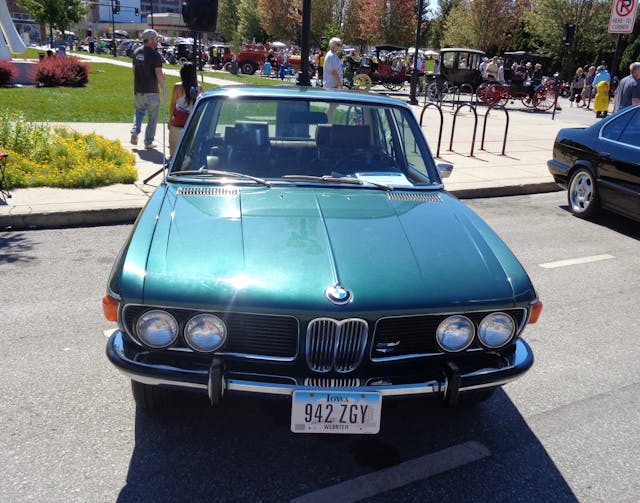
Also in 1971 came the Bavaria, like our featured car today. It was essentially a slightly de-trimmed 2500/2800. Apparently the big six BMW sedans’ pricing in the States was a bit daunting, and this new model was offered in response. The initial ’71 model had an MSRP of $4987 ($38,459), which was $1200 less than the 2500 and $2000 cheaper than the 2800. Sales did see an increase, so it must have tempted more buyers than the previous model year.

The 3.0S and 3.0Si, unlike the Bavaria, were fully loaded cars with leather interior and full power assists, but, of course, they had a healthy bump price-wise as well. The ultimate version of the 1969-77 big BMWs, however, was the 3.3 L, which gained not only a bigger engine, but an extra four inches of wheelbase.

Top speed of the Broughamiest BMW, the 3.3 L could achieve 127 mph. The initial 3.3 L had 190 hp at 5500 rpm, but in 1975 came the 3.3 Li, which replaced the carbs with the aforementioned Bosch fuel injection, which bumped power to 197 hp.

Automatic transmission was standard on the 3.3L/Li, but a manual was available on special order for the more sporting captain of industry.
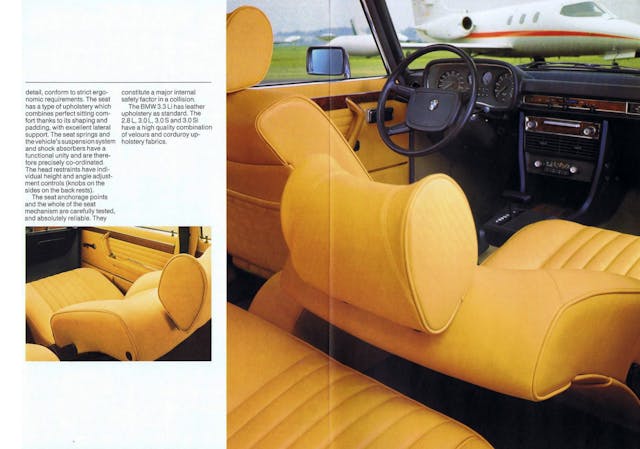
The end of the road for these graceful German sedans came in 1977. All told, 208,305 were built. The next year the car would be redesigned and become the 733i. I like those a lot too, but I like the 1969-77 generation a little bit more. As luck would have it, I spotted a like-new 733i in the classic color combo of silver with red leather interior in downtown Davenport, Iowa, last summer. Expect a column on that one, one of these days!
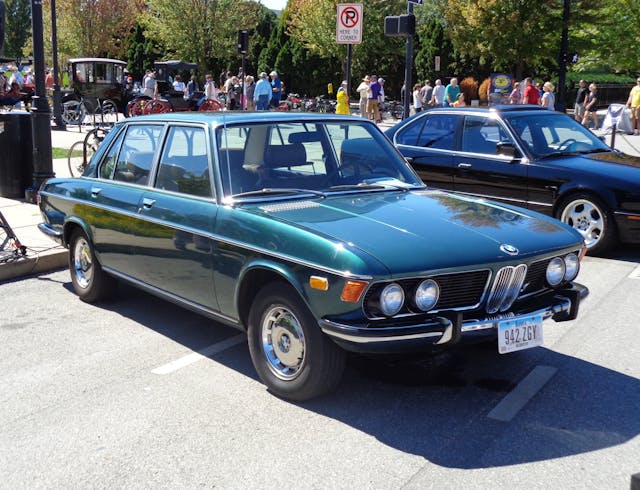
As for our featured car, I saw it at the very first Des Moines Concours d’Elegance I attended, back in 2016. BMW was one of the featured marques that year, and so there were several very fine classic examples on display, including this one and the ’70 3.0 CS that I wrote about some time back. In both cases, I loved the metallic jade green paint with the saddle tan interiors. They made for a great matched set!

***
Check out the Hagerty Media homepage so you don’t miss a single story, or better yet, bookmark it. To get our best stories delivered right to your inbox, subscribe to our newsletters.

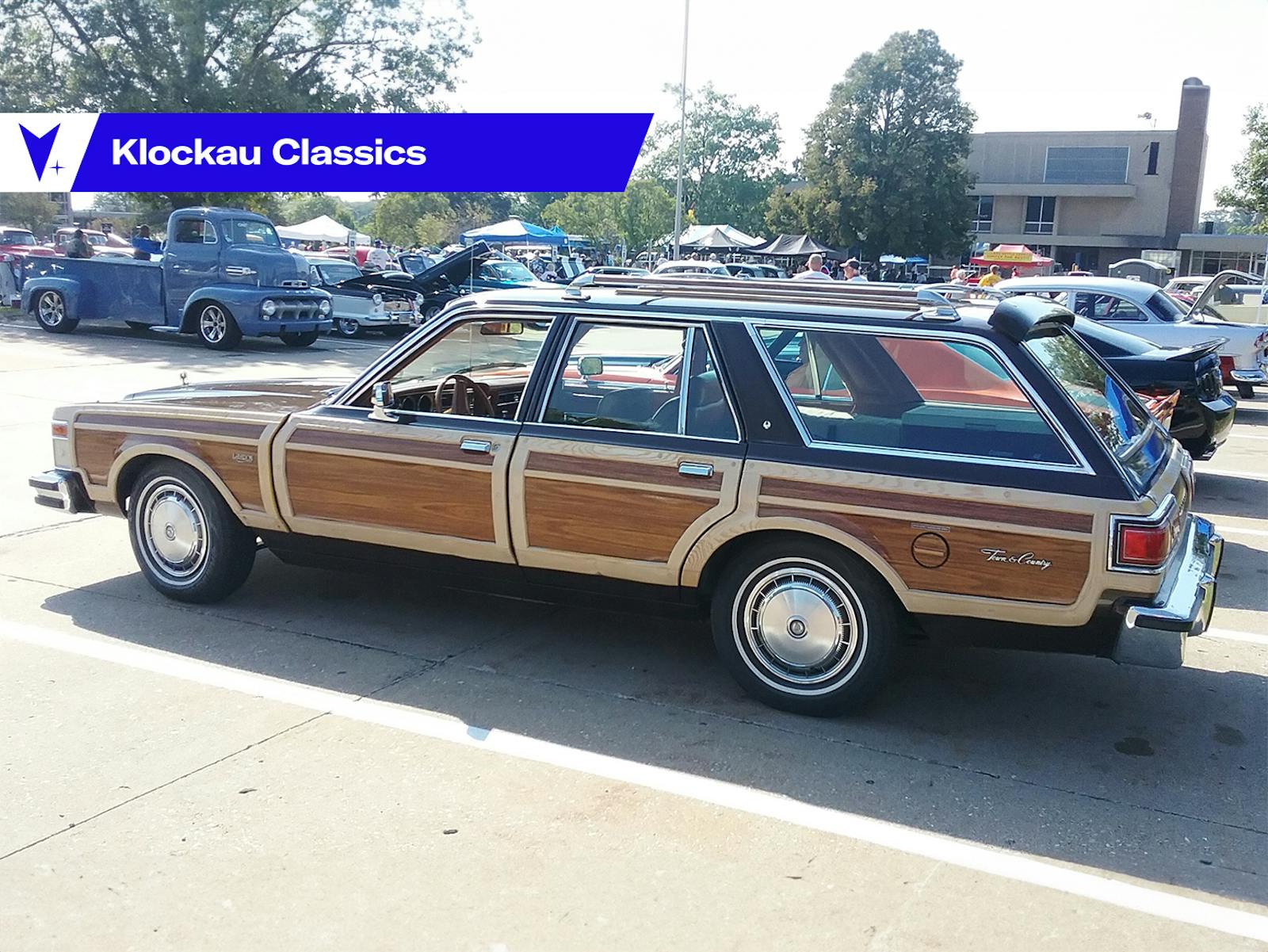

My boss had, for a short time, a 70s Bavaria. I drove it once, and was underwhelmed. Having read all the car mags of the time go on and on about how great these cars were, I was disappointed the noise level and harsh ride. I never put it through its paces, though, so maybe I missed out. I was very impressed with a 70s 320i owned by a customer. I thought the larger, more expensive six-cylinder Bavaria would be more refined than the four-cylinder 320i but, other than at idle, I didn’t find that to be the case.
Sport sedans-German-were my dream cars then. Now that I’m (much) older…bring on the Broughamage.
You remind me of my great-aunt, who once road tripped to Fla. with another couple in their Mercedes 240 Diesel, she never recovered, her husband drove Ford Galaxie 500,
Yeah but it “runs forever”, great….so now your stuck with an overpriced smelly slow boring car, but at least you’ll have it forever.
Owned E9, coupe version of this, 170 bhp. automatic cut my Ottawa-Toronto commute by half, autobahn engineering is real.
Paging the Hack Mechanic, your car has arrived but it was inadvertently parked in the Klockau Classics parking space in the garage. Please retrieve your car ASAP as Mr Klockau is waiting to park his Fleetwood Talisman. Paging the Hack Mechanic please report to the garage.
Finally stopped laughing…remembering the contrasting approaches to luxury is fun, though.
Use to have a customer that had one of these. Just changing the oil was a mess. I hated working on this car.
It ended up rusting around the strut towers and hit a tree. The strut went through and sent the car off the road.
The curse of the MacPherson strut (and Malaise Era rustproofing). Could not make customers understand rust was more than just ugly.
Remember when BMW could make simple, easy to live with and nice interiors? That era is gone.
I owned my 72 Bavaria for 30 years and enjoyed every moment of it, After moving to the northeast rust belt I had to give it up due to frame damage. It was part of the family and always got good comments from anyone who saw or rode in it! Recently sent the Hack Mechanic a bunch of Bavaria stuff I still had in my garage.